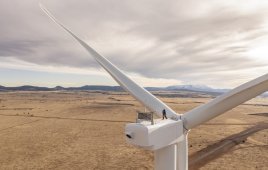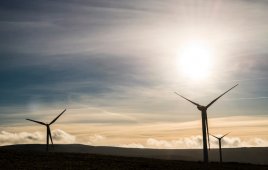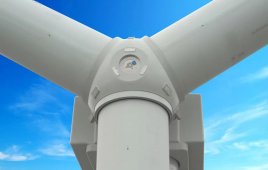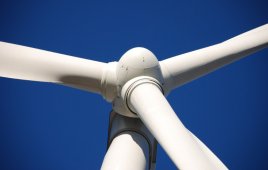Instead of waiting for fickle winds to come to MARS (Magenn’s Air Rotor System) it goes to the wind. It is a 50 by 120-ft lighter-than-air device from Magenn Power LLC, Washington, D.C., that floats 600 to 1,000 feet up to catch wind currents present almost everywhere. MARS rotates to generate up to 100 kW/h, and feeds it down a tether to a grid or battery array. “Traditional fixed turbines work in 15% of the world. We’re the solution for the other 85%,” says Magenn CEO Mac Brown.

Developers say the helium-inflated MARS can complement a diesel generator with combined power delivered for less than $0.20 /kWh. This compares to $0.50 to over $0.99/kWh for diesel-alone.
MARS is a lighter-than-air tethered wind turbine that rotates about a horizontal axis in response to wind. Helium sustains MARS and lets it ascend to a higher altitude than traditional wind turbines. MARS captures the energy available in the 600 to 1,000-foot level that exists most everywhere. Its rotation also generates an effect that provides additional lift, stabilizing the turbine and positioning it in a controlled and restricted location to adhere to FAA and Transport Canada guidelines. “SolidWorks CAD software helps us experiment with different turbine configurations, compare their power outputs, and save thousands that we once spent on outsourced simulations,” says Brown.

The design removes all placement limitations. Coast-line and off-shore locations are unnecessary to capture higher speed winds. Reaching winds at 1,000-feet up allows installing MARS closer to the grid. The mobile turbine can be rapidly deployed, deflated, and redeployed without need for towers or heavy cranes. What’s more, MARS is said to be bird and bat friendly, generates little noise, and operates in a wider range of wind speeds, from 4 mph to greater than 60 mph.
Brown sees applications in developing nations where infrastructure is limited or non-existent and off-grid combined wind and diesel for island nations, farms, and remote areas. Rapid deployment diesel and wind could be air dropped to disaster areas for power to emergency and medical equipment.
Capacity factors, MARS versus conventional designs

Filed Under: Turbines





What does Mr. Brown suggest for action when the wind speed is much greater than 60mph? How about a tornado or other cyclonic type winds?